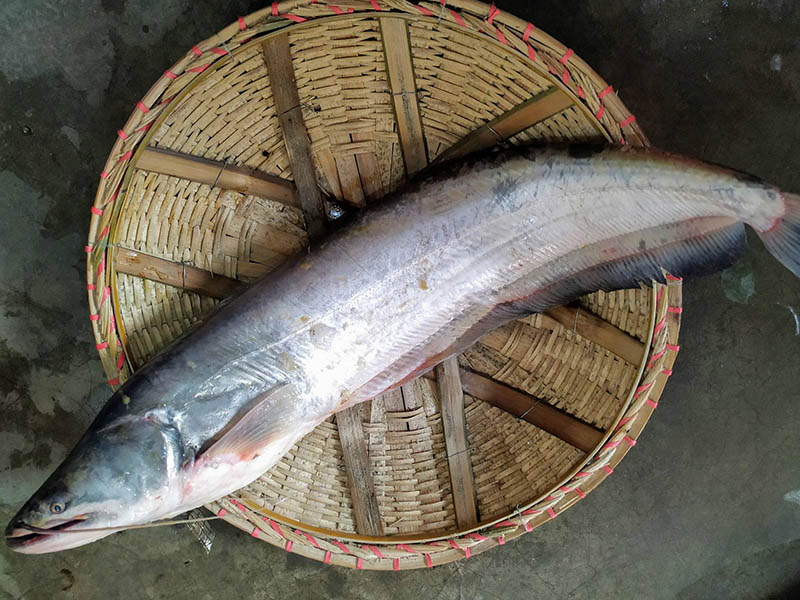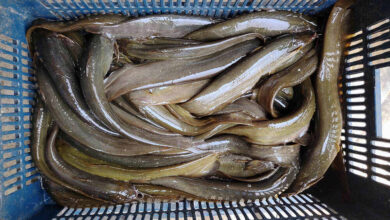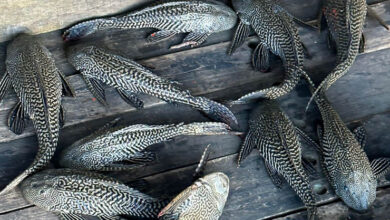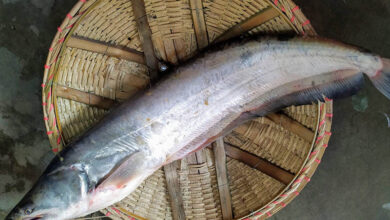
Boal or Helicopter catfish are a type of freshwater fish that grow quickly and are in high demand as food fish due to their excellent nutritional value both locally and internationally. Other names for this species of fish include Boal, Wallago, Wallagonia attu, Borali, and so on.
Large rivers, swamps, and freshwater lakes are the native habitats of boal fish. However, you can raise fish commercially in large tanks, cages, or with the use of the biofloc fish farming system with the aid of contemporary aquaculture research, and you will undoubtedly be able to turn a profit. because boal fish are in high demand and have high market prices.
How to Culture Helicopter Catfish:
The process of beginning a helicopter catfish farm is similar to that of a carp, pabda, or chital farm. The Boal / helicopter catfish farming business is an excellent option to establish a commercial fish farming enterprise. This is a business that even novices may start with ease.
This article contains comprehensive information about commercial boal / helicopter catfish farming that will help you increase your profits from this venture.
Site selection and Pond Preparation:
Once a comprehensive business strategy has been prepared, the next step is to choose a prime location for your boal fish farming venture. It will be ideal if the location you have chosen is devoid of residential areas, noise pollution, and other disturbances.
You must build a pond after choosing a suitable location. The size of the pond will depend on how much area you have available, but an earthen pond with at least an acre of land will be preferable for commercial fish production. Natural earthen ponds are said to be beneficial for the boal fish farming industry.
An improved fish yield is the result of proper pond preparation. Pond preparation includes everything from watering the pond to fertilizing, liming, greening the pond, and adding natural feed.
Seed collection / spawning:
You can obtain the seeds for a commercial boal fish farming enterprise from hatcheries that spawn the fish or from natural sources.
From mid-April to August, boal fish spawn. During breeding, fish may be distinguished clearly between male and female. The male fish’s belly is normal during the breeding season, whereas the female fish’s belly is filled with eggs.
Boal fish ovulates only when injected with PG (Pituitary gland) hormones. The first dosage of injection should only be given to female fish. The dosage is 2 mg/kg. A follow-up dose of 4 mg/kg is administered after 6 hours. Fish that have received an injection of PG hormone should be housed separately, male and female. Typically, boal fish breed six hours following their second dose. When laying fish eggs, it’s important to remember that the fish should be removed from the house one at a time if two out of every egg hatches.
The eggs will now emerge if the belly of the mother fish is gently touched. The milt should be rubbed against the male fish’s belly and thoroughly combined with the feathers from the bird on the eggs as soon as the female fish hatches. The eggs should then be rinsed two or three times with clean water and put in a 3/4-inch-high water house. The eggs will hatch in this manner in 20 or 22 hours.
Fingerlings stocking and rearing:
Because of their carnivorous habit, boal fingerlings cannot be raised on their own. Cultivating them in combination with other species can yield good results. In mixed cultures, the stocking density is one fish per 5%. Fingerlings can be stocked at a density of 15,000 to 20,000 per acre. In that instance, 2 inch fry should be released when the other fish weigh 150 or 200 grams. If this isn’t done, the boal will grow quickly and start eating other fish.
Feeding:
Helicopter Catfish / Wallago Attu are sometimes referred to as freshwater sharks because of their voracious and carnivorous habits. They consume several kinds of tiny fish and aquatic creatures. Generally, young boal fishes consume a variety of small fish and insects that they can readily obtain. Typically, this fish feeds at night. Aside from that, without artificial food, the fish do not get very large. You need to deliver artificial nutritious feed correctly for commercial boal fish farming operation.
Proper monitoring:
The commercial boal fish farming industry is growing in popularity, but there are a lot of things to keep in mind while managing ponds, managing fish, controlling diseases, keeping an eye on weight, providing enough feed, treating water, and so forth. These are all part of the project management and monitoring for the fish farming. The main factor determining your farm’s success will be effective management.
Harvesting & Marketing:
Boal fish typically reach maturity in 10 to 12 months. Boal fish reach a weight of 20 to 25 kg after two or three years. However, you are free to begin harvesting the boal fish as soon as they reach the size you wish. Boal fish can be harvested using either the net or drain harvesting method. For a commercial endeavor, marketing is the most crucial phase. It is your responsibility as a commercial fish grower to research market demand and price. Taking the cost-benefit analysis of marketing into consideration, you can send them to the town market to obtain a better price.
Farhana Islam
Agriculturist, Researcher
Fisheries Resource Management, CVASU




